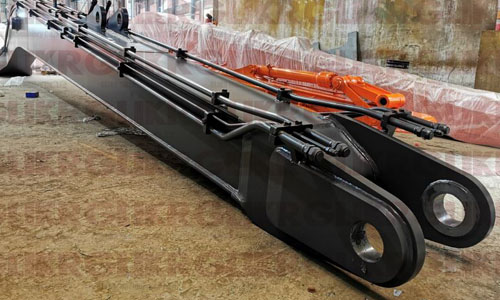WHAT ARE THE DIFFERENT PARTS OF AN EXCAVATOR CALLED?
An excavator, also known as a digger or hydraulic excavator, is a heavy construction machine used for digging, lifting, and moving materials. It consists of several essential parts, each serving a specific function. Here are the different parts of an excavator:
House: The house, also called the cab or cockpit, is the operator compartment where the operator sits and controls the excavator. It provides a protected space with controls, switches, and instruments for operating the machine.
Boom: The boom is the long, horizontal arm of the excavator that extends from the house. It provides reach and lifting capacity to the machine. The boom can be raised, lowered, and swung horizontally to position the bucket or attachment accurately.
Stick or Arm: The stick, also known as the arm, is the section that connects the boom to the bucket or attachment. It allows the operator to extend or retract the bucket for digging or lifting operations. The length of the stick determines the machine's digging depth.
Bucket: The bucket is the attachment at the end of the stick or arm. It is used for digging, scooping, and loading materials. Buckets come in various sizes and configurations, such as general-purpose buckets, trenching buckets, rock buckets, or specialized attachments like grapples or thumbs.
Track or Undercarriage: Excavators have either tracks or wheels for movement, depending on the model. The track system consists of a series of track shoes or pads that provide traction and stability. The undercarriage also includes components like rollers, idlers, and sprockets to support and guide the tracks.
Track Frame: The track frame is the framework that supports the track system and connects it to the excavator's main body. It provides stability and houses the undercarriage components.
Counterweight: The counterweight is a heavy metal weight located at the rear of the excavator. It counterbalances the weight of the boom and bucket, ensuring stability and preventing tipping while lifting heavy loads. The counterweight can be removable or integrated into the design of the excavator.
Hydraulic Cylinders: Excavators rely on hydraulic systems to power and control various movements. Hydraulic cylinders are responsible for extending, retracting, and pivoting the boom, stick, and bucket. These cylinders convert hydraulic pressure into linear motion, allowing precise control of the excavator's movements.
Hydraulic Pump and Motors: The hydraulic pump supplies pressurized hydraulic fluid to power the excavator's hydraulic system. Hydraulic motors, also known as hydraulic drive motors, convert hydraulic energy into mechanical energy to drive the excavator's tracks or wheels.
Engine: The engine is the power source of the excavator. It provides the necessary horsepower and torque to drive the hydraulic system, tracks or wheels, and other components. Excavators usually have diesel engines due to their durability, efficiency, and high torque output.
Control Levers and Pedals: Within the operator's compartment, control levers and pedals are used to operate the various functions of the excavator. These controls allow the operator to maneuver the machine, control the boom, stick, and bucket movements, and operate attachments.
Work Lights: Work lights are installed on excavators to provide illumination in low-light or nighttime working conditions. They ensure better visibility and safety during excavation operations.
These are some of the main parts and components of an excavator. The specific design and configuration of these parts may vary depending on the make, model, and size of the excavator. Each part plays a crucial role in the excavator's functionality, enabling it to perform a wide range of digging, lifting, and material handling tasks in construction, mining, and other industries.
For more information, please visit our website.




评论
发表评论